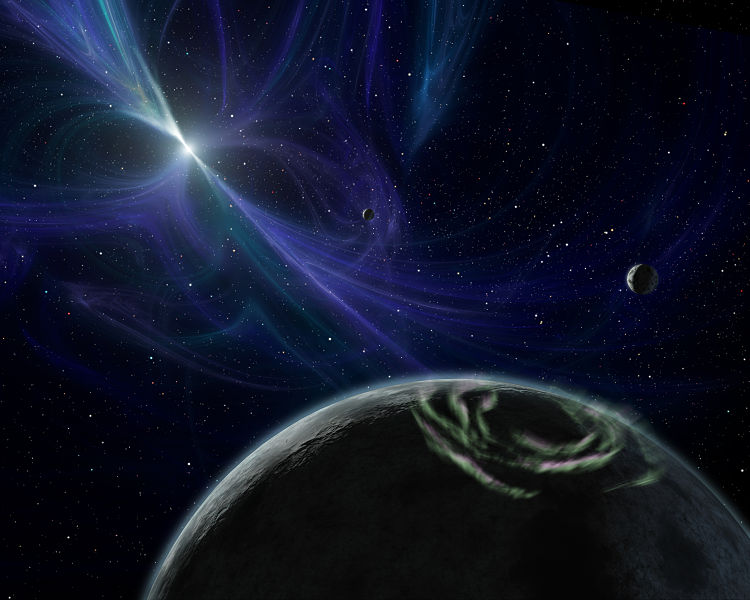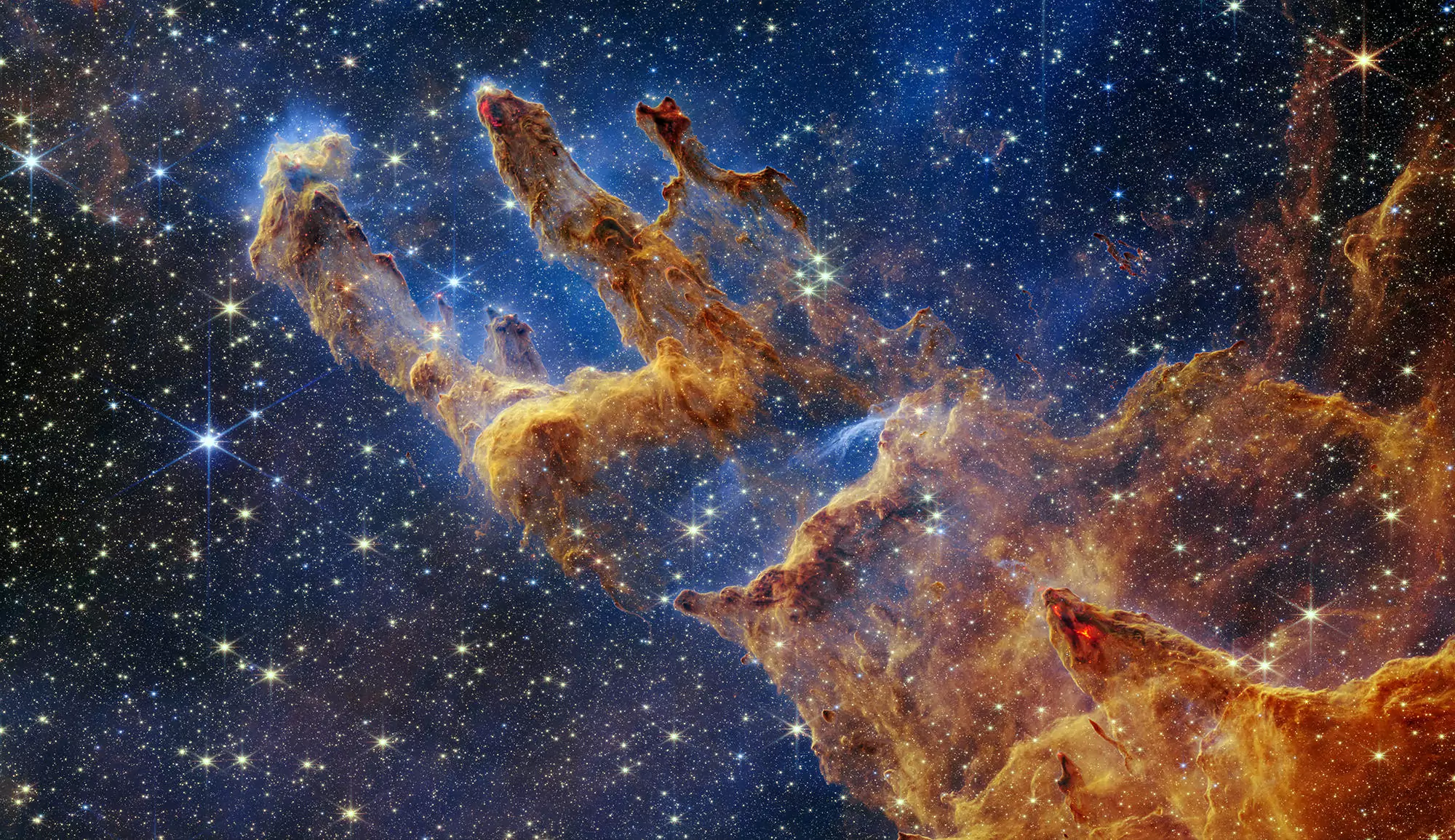The first three known exoplanets (discovered in 1992) move around a quite peculiar star, poetically named « PSR 1257+12 » : if its mass is comparable to those of the sun, its diameter do not exceed 40 kilometers (the sun’s diameter is 1,400,000 km long). PSR1257+12 is mainly made of neutrons, it is a neutron star. Neutron stars have the same density as an atomic nucleus. They are the lefover of heavy stars (initially of more than 8 solar masses) that exploded. In other words, they are a part of a supernova remnant. If the neutron star has 2 or 3 solar masses, the rest of the original star (more than 5 solar masses) have been spread around by the explosion. Because of their very small size, the neutron stars luminosity is very low, and it does help to see them with telescopes. On the other hand, they spin very fast (a turn in a few milliseconds to few seconds, instead of 27 days for the sun), and their magnetic field is very strong. So, a series of rather complex phenomenas transform them into powerful radio emiters, called .pulsars.. Actually, PSR1257+12 and its planets where discovered through observations made with radiotelescopes, and PSR1257+12 is regularly monitored with the Nançay Radio Telescope.

The planets discovered around PSR1257+12 have a mass similar to those of the Earth, and they are made of .ordinary. matter. Their size (a few thousands of kilometers) is much larger than those of their star ; and this contributes to the exotic character of this star-planets system. Since 1992, many other planets have been discovered : they turn around sun-like stars (.main sequence stars. in the HR diagram), and the hope to discover life on a few of them has focused much attention. Because the prospect of finding life on pulsar’s planets is very low, and because they are quite rare, pulsar’s planets are less famous than the others. Nevertheless, the pulsar’s planets did not reveal all their secrets ; in particular we don’t know much about their origin. Did they exist before the explosion of the progenitor star ? In that case, how did they resist to it ? Or were they formed after the explosion, form the leftovers spread in the neighbohood ? In that case, does the planets formation happen in a similar way to those happening around young normal stars ? Or are there processes which are specific to neutron stars that could change the way the planets are formed ? Two astronomers, at the Luth (observatoire de Paris-Meudon) and at the Strasbourg observatory have conducted a theoretical study on the interaction of planets and smaller bodies (asteroids, comets) with the environment of a pulsar. They have based their study on the fact that a pulsar emits a wind made of a diffuse but very fast fluid. From numerous models, and up to a yet unknown distance, in spite of having a velocity close to the speed of light, this wind can be slower than the waves that propagate the fluctuations of the magnetic field (Alfvén waves). The two scientists have shown that in that case, the planet is followed by a wake characterized by a distortion of the magnetic field carried by the wind, and by a very strong electric current. The two astronomers conclude that this wake can have two important outcomes, depending on the size of the body turning around the pulsar : The electric current associated to the wake of a planet could be unstable in a way that would transform it into a powerful source of radio-waves, that maybe, could be detected with the next generation of radiotelescopes. This might provide a new way of discovering planets around pulsars. On the other hand, the wake could modify the orbit of smaller bodies like asteroids, comets, planetesimals (pieces of planets to be), strongly enough to make them fall onto their star, or to chase them away (depending on the orientation of their orbit). Such migration would be very fast, in comparison with the usual astronomical time scales. For one kilometer sized bodies, the migration would take less than 10,000 years. This should be taken into account in the next models of pulsar’s planets formation, like those of PSR1257+12, if they have been created from the remnants of the supernova.

Fabrice Mottez and Jean Heyvaerts (2011)
- Magnetic coupling of planets and small bodies with a pulsar wind, Astronomy and Astrophysics, 532, 21
- A magnetic thrust action on small bodies orbiting a pulsar, Astronomy and Astrophysics, 532, 22
